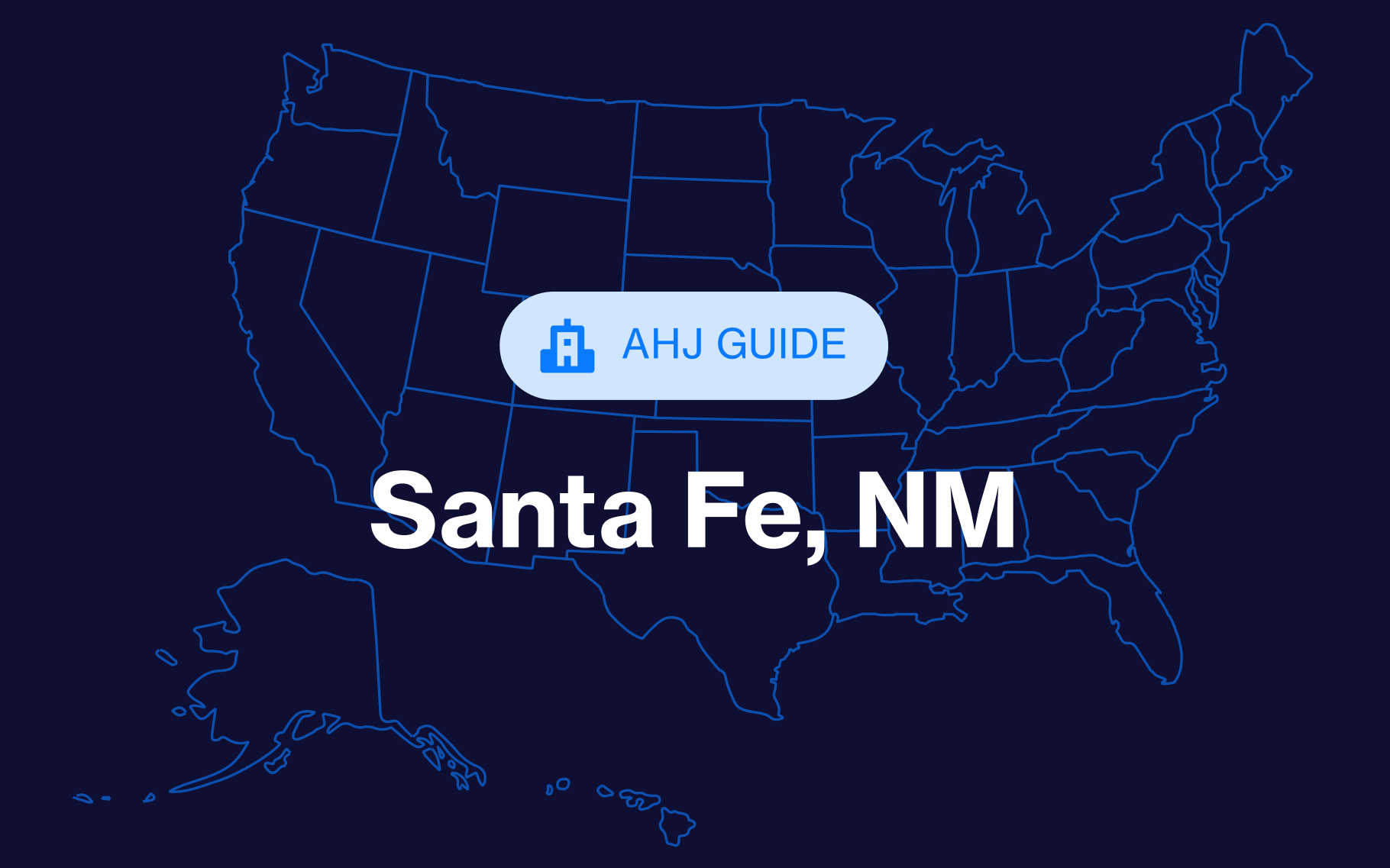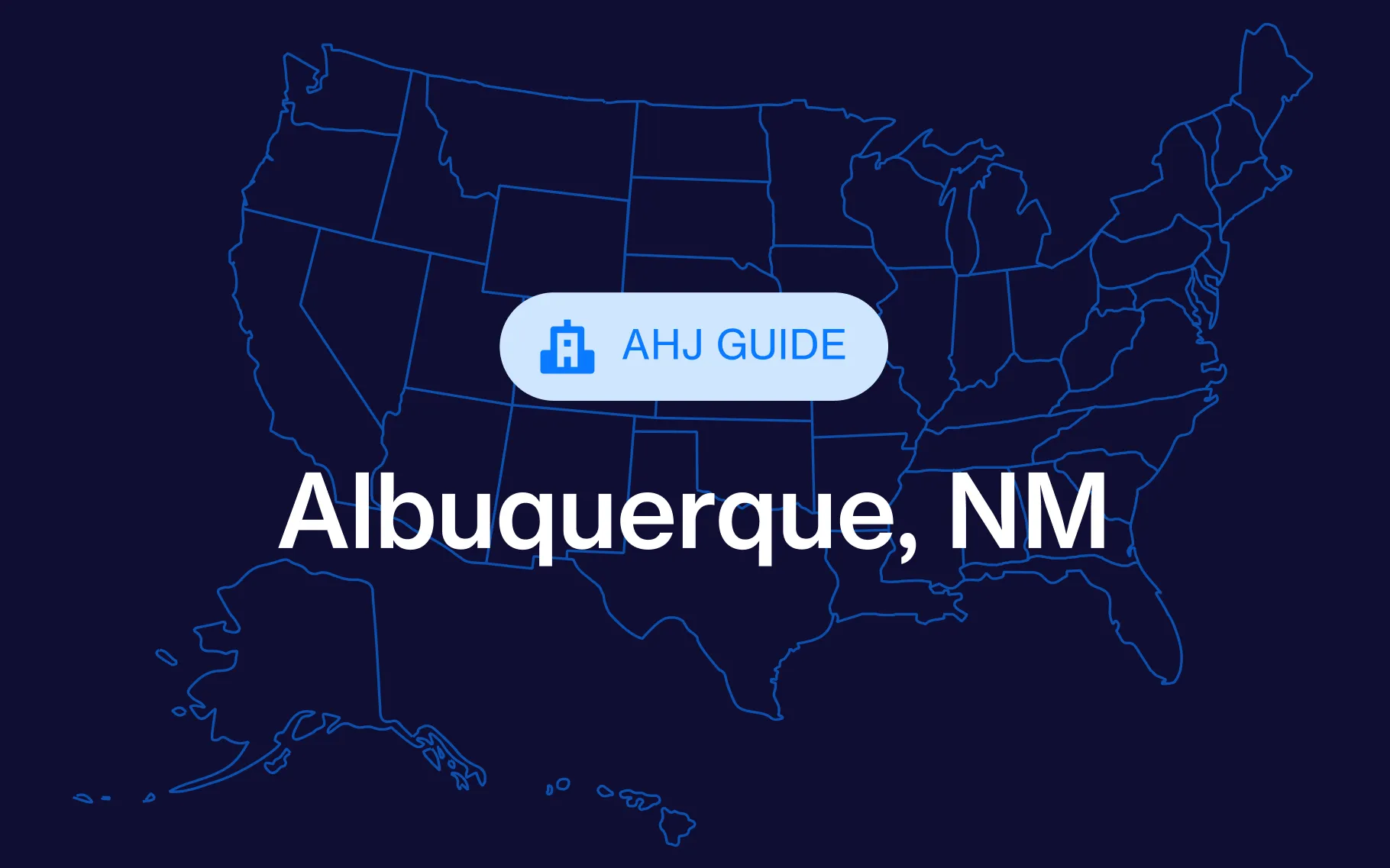New Mexico’s mix of historic communities, rural areas, and fast-growing metro regions like Albuquerque makes its building permit process highly localized. While the state sets minimum building codes, actual permits are issued by cities and counties, each with its own rules, timelines, and fee schedules.
For builders, contractors, and developers, understanding this split between state oversight and local administration is essential to keeping projects on track.
Who issues building permits in New Mexico?
Building permits are issued by local municipalities and counties.
Examples include:
- City of Albuquerque Planning Department issues permits for residential and commercial work within city limits
- Santa Fe Land Use Department handles building permits in the City and County of Santa Fe.
- Bernalillo County Planning & Development Services oversees permitting for unincorporated areas outside Albuquerque.
At the state level, the New Mexico Construction Industries Division (CID) — part of the Regulation and Licensing Department — adopts and enforces statewide building codes and also issues certain permits, particularly trade permits (electrical, mechanical, and plumbing) in areas without local enforcement.
When do you need a building permit in New Mexico?
Permits in New Mexico are typically required for:
- New residential or commercial construction
- Additions, remodels, or structural alterations
- Electrical, plumbing, and mechanical work
- Roofing, siding, window, or door replacements when structural or energy performance is affected
- Accessory structures like garages, sheds, and decks over size thresholds
- Demolition or relocation of structures
Some exemptions apply. For example, cosmetic updates like painting, flooring, cabinets, or non-structural repairs usually don’t require a permit. Agricultural buildings in rural areas may also be exempt, but requirements vary — always confirm with the local jurisdiction or the CID.
New Mexico building permit requirements
Permitting requirements vary by jurisdiction, but expect to submit the following:
- A completed permit application form (city, county, or CID)
- Construction drawings: site plan, floor plans, elevations, structural details
- Engineering reports or stamped drawings when required for structural or commercial projects
- Trade license numbers for contractors (state law requires licensed contractors for most electrical, plumbing, and mechanical work)
- Energy code compliance documentation, since New Mexico enforces the New Mexico Energy Conservation Code, based on the International Energy Conservation Code (IECC)
- Zoning or land use approvals when applicable, especially for subdivisions, historic districts, or environmentally sensitive areas
For example, the City of Albuquerque requires digital plan submissions through its POSSE system, while smaller counties may accept paper applications.
New Mexico building permit costs
Building permit fees in New Mexico vary by jurisdiction and project scope.
Common fee structures include:
- Valuation-based fees, tied to the project’s construction value (materials + labor)
- Flat fees for smaller trade permits (e.g., electrical service upgrades, plumbing fixtures, mechanical units)
- Plan review fees, often separate from base permit fees
- Surcharges, such as state training or technology fees, added to most permits
As an example, Santa Fe County charges fees according to a valuation-based schedule, with separate plan review charges, while Albuquerque publishes a detailed fee schedule that includes both valuation and trade permit costs.
Unique considerations when permitting in New Mexico
Historic preservation
Projects in areas like Santa Fe or Old Town Albuquerque may require additional review by local historic preservation commissions.
Energy efficiency
The state’s adoption of the New Mexico Energy Conservation Code means stricter requirements for insulation, HVAC efficiency, and building envelope standards compared to older codes.
Environmental and cultural oversight
Projects near archaeological sites, tribal lands, or environmentally sensitive areas may require additional clearances from the State Historic Preservation Division or the Environment Department.
County vs. state enforcement
In rural areas, the CID steps in to issue permits where counties have not adopted enforcement programs, so the process may differ from more urban counties.
How to get a building permit in New Mexico
Although every jurisdiction has its own procedures, the general process looks like this:
- Confirm permit authority:
Determine if your project falls under city, county, or state (CID) jurisdiction. - Check permit requirements:
Review local rules to see if your work requires a permit or qualifies for an exemption. - Prepare documents:
Assemble construction drawings, engineering reports, contractor licenses, and energy compliance paperwork. - Submit the application:
File online or at the local building department. Rural areas may direct you to CID offices. - Plan review
Zoning, structural, fire, energy, and trade reviews are conducted. - Address corrections
Respond to reviewer comments, update documents, and resubmit if needed. - Pay fees and receive permit
Once approved and fees are paid, your permit will be issued. - Schedule inspections
Arrange inspections at required stages, like foundation, framing, electrical, plumbing, mechanical, and final.
Permitting timelines vary. Simple trade permits may be issued in days, while complex commercial projects in major cities can take weeks or months.







